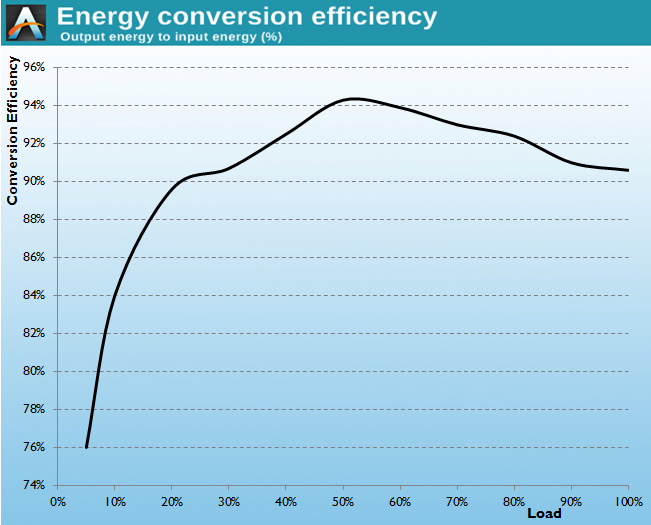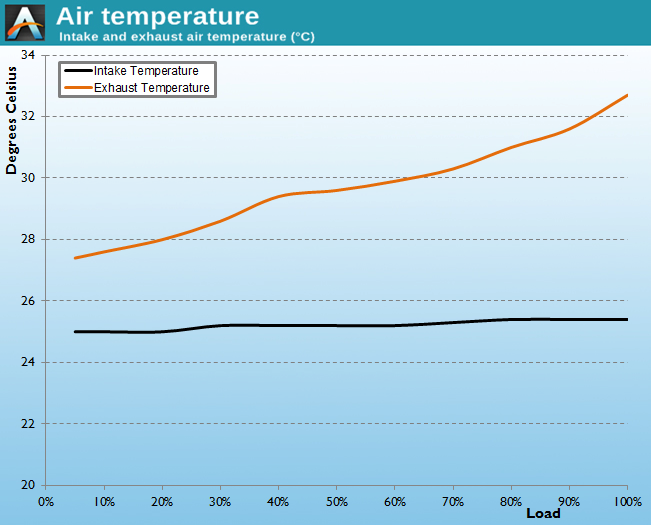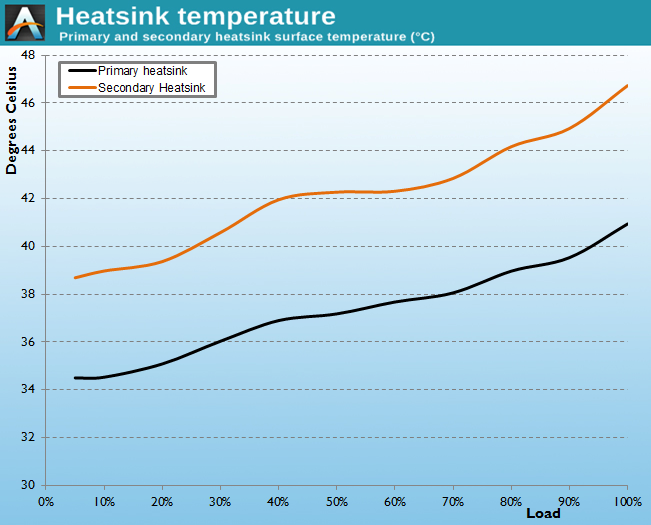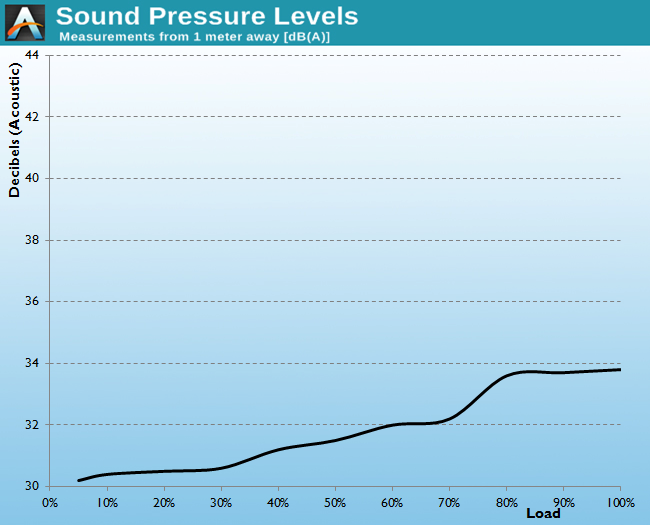Seasonic S12G 650W Power Supply Review
by E. Fylladitakis on February 28, 2014 2:20 PM EST- Posted in
- Cases/Cooling/PSUs
- Seasonic
- 80 Plus Gold
Test Equipment and Methodology
For the testing of PSUs, we are using high precision electronic loads with a maximum power draw of 2700W, a Rigol DS5042M 40MHz oscilloscope, an Extech 380803 power analyzer, two high precision UNI-T UT-325 digital thermometers, an Extech HD600 SPL meter, a self-designed hotbox, and various other bits and parts. For a thorough explanation of our testing methodology and more details on our equipment, please refer to our How We Test PSUs - 2014 Pipeline post.
Cold Test Results
At room temperature, the Seasonic S12G 650W unit easily honors its 80 Plus Gold certification, reaching up to 94.4% efficiency at 50% load. Inside the normal operating range of the power supply, which is between 20% and 100% load, the efficiency remains above 90% at all times. In fact, if the S12G was just a little more efficient while heavily stressed, it could hit 80 Plus Platinum status.
As expected, the efficiency drops sharply when the load is below 20% (130W in this case), dropping down to 76% with a 32W load, but it goes up to 84% when the load is increased to 65W. These are considered "out of range" conditions and do not affect the 80 Plus certification of the unit, but considering many modern PCs will idle at 40-60W, it's still worthwhile to look at performance at these loads. Of course, at 32W load the difference between 75% and 85% efficiency only amounts to around 5W at the outlet.
Both the air and the heatsink temperatures might appear a little high for a unit of this capacity and efficiency operating at room temperature, but that is because the fan of the Seasonic S12G 650W PSU is being "lazy" -- or "quiet" if you prefer. The fan is thermally controlled and it looks like Seasonic decided it didn't need to spin faster under such testing conditions. During our SPL testing, the fan reaches audible levels only after the unit hits ~80% of its rated output.














77 Comments
View All Comments
E.Fyll - Sunday, March 2, 2014 - link
Because an audio recording will be:a) distorted by the sound recording device,
b) distorted by the sound playing device and,
c) entirely unrelated to the original volume.
Even if you consider that a) the recording device is perfect and b) the playback device is perfect, plus d) that the sound file is uncompressed and of very high quality, the end result will be affected simply by how high is the volume knob of each user.
That's misleading, so I'm not going to do it. It has no practical meaning over me simply stating how the unit "sounds like" in the text.
pintos - Sunday, March 2, 2014 - link
How are you measuring the sound level? Wouldn't that have the same problems?pintos - Sunday, March 2, 2014 - link
Also, same question for the rest of your equipment. Don't they also have measuring issues yet they're fine to publish?emn13 - Saturday, March 1, 2014 - link
You're wrong.frequency spectrums aren't hard to read: flat or smooth are plain noise (white or otherwise), and bumpy is tonal. If you include a time component it gets a little messier, but then, we're not talking high-precision sound here, just a general feel of the music; even that may be acceptable.
Furthermore, it certainly doesn't take any high-cost equipment: any bog-standard computer mic will do a surprisingly good job, and if you spend a *little* effort getting a decent (not necessarily best-of-the best) mic and verify the system's quality using a a simple frequency response plot, you can get more than adequate quality for this purpose for at most a few hundred dollars - likely less, but it's not worth your time at that point.
E.Fyll - Sunday, March 2, 2014 - link
Well, frequency spectrums are very hard to read, they do are entirely useless to the standard consumer (the same "type" of noise can actually sound a lot different) and if you think that you can do it with just a "computer mic", well, I have nothing more to say...If I attempt to do anything like that, I would have wasted time and resources on something entirely useless and ridiculously inaccurate. Sorry, that I cannot do. Call me an arrogant perfectionist but I would rather not do something at all if I cannot do it correctly.
quest for silence - Monday, March 3, 2014 - link
"A" in dB(A) stands for "A-weighted"; the further explanation as "the part of dB range that your ears can perceive" is just meaningless.quest for silence - Tuesday, March 4, 2014 - link
"A" in "dB(A)" stands for "A-weighted", so that the subsequent state: «i.e. it is within the part of the dB range that your ears can perceive» is meaningless.g.davis - Saturday, March 1, 2014 - link
Ya, it'd be nice if AT can get numbers for reliability of PSUs somehow. Well, actually, for any electronic device they cover (ie. HDD, SSD, RAM, notebooks, GPU, motherboard, complete systems, etc.). However, I doubt that's possible aside from an occasional external report.Archipelago - Saturday, March 1, 2014 - link
I have had a Seasonic 400W fanless and it's totally quiet. The only time I heard it is the faint click when I shut down.mark28 - Saturday, March 1, 2014 - link
Thanks for the info. This makes me wonder if Seasonic has quality control issues which is far worse than my noise issue. Maybe they just don't test for noise output during quality checks but that kind of ignores a large part of the people who buy fanless parts specifically to reduce noise regardless of efficiency.The noise from the fanless Seasonic PSU I had was so annoying that I replaced it with an actively cooled Corsair one. The difference was like listening to a crying baby and the static noise you hear in between radio stations. Even if it's quieter in volume level (ie. several rooms away), the crying of a baby is way more annoying than static noise.